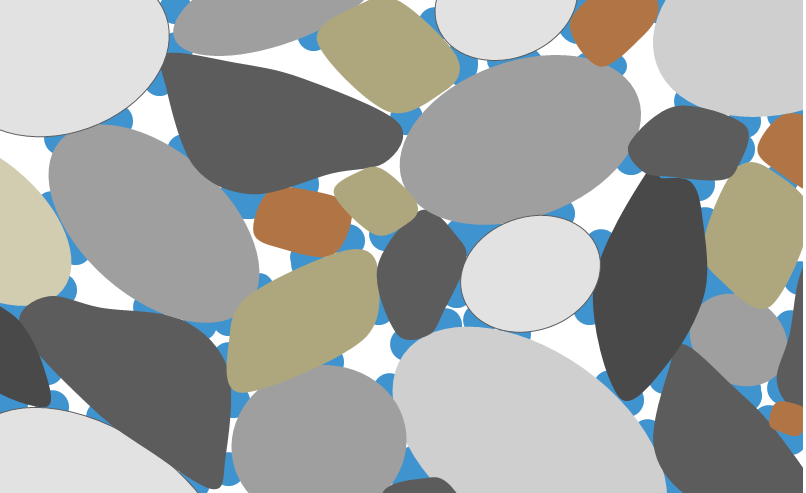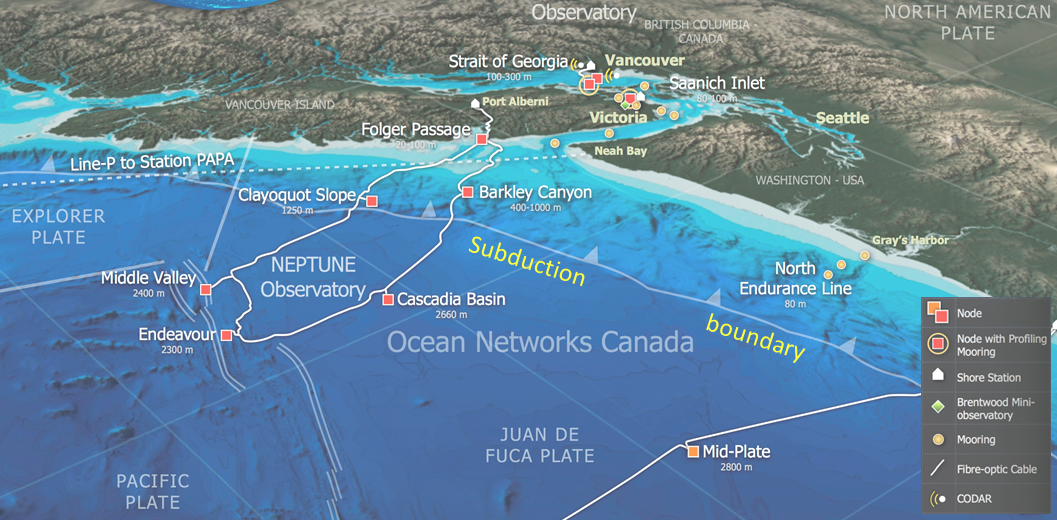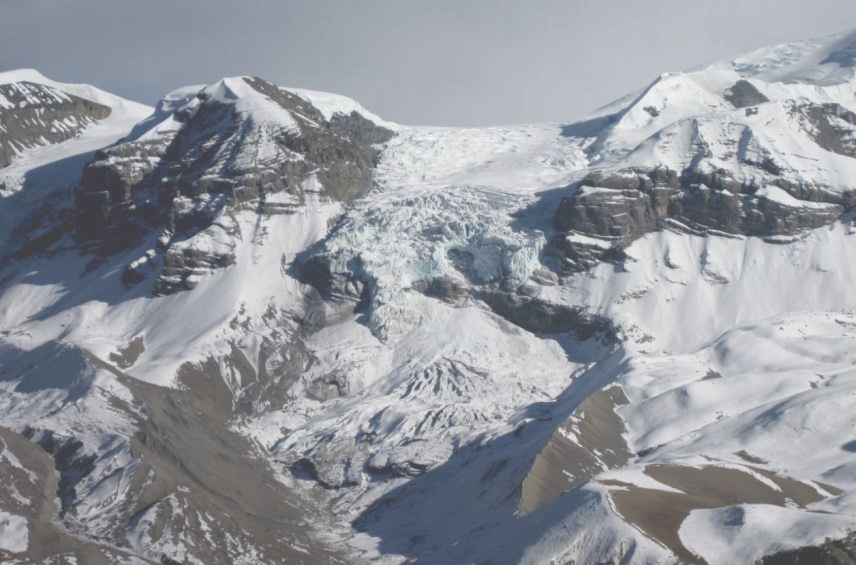Table of Contents
2-1 Weathering and Soil
Read Chapter 5 in Physical Geology.
Before we talk about weathering, it’s important to first think about how it fits into the rock cycle (Figure 3.1.1 in your textbook). Since rocks cannot be weathered at all if they are still buried beneath other rocks, the key precursor to weathering of any kind is uplift, the removal of overlying material, and exposure of the rock at surface. Plate tectonic processes, especially plate convergence and continental collisions, are primarily responsible for uplift. Once uplifted to form mountains, rock can be eroded and weathered tens to hundreds of times faster than if it remained part of a flat plain (see Figure 2-1 and Figure 5.1.4 in your textbook).

Section 5.1 describes various types of mechanical weathering. Make sure that you understand the mechanics of these processes, and the types of environments in which each one might predominate. For example, freeze-thaw-related weathering requires repeated freezing and thawing, so, contrary to what you might first think, it doesn’t play a significant role during the fall, winter, and spring in the far north. It doesn’t play any role at all in regions where freezing is rare.
Completing Exercise 5.1 will give you some practice in identifying the processes of mechanical weathering.
Chemical weathering (Section 5.2) occurs because minerals are only stable within a restricted range of temperatures, pressures and chemical conditions. Most minerals form at high temperatures and high pressures and in the absence of oxygen, and when they are exposed at the surface, they become unstable and begin to change. The main catalysts for this change are the weak carbonic acid present in all surface water (see the first equation in Section 5.2) and the abundance of oxygen of the atmosphere.
Since feldspar is the most common mineral of the crust, the most important chemical weathering process is the transformation of feldspar to clay. Clay minerals are much softer and weaker than feldspar, so a rock in which some of the feldspar is altered to clay (such as the granite in Figure 5.2.1) is much more susceptible to mechanical weathering than it was before. This phenomenon applies to all types of chemical weathering, and it works both ways as well. The disintegration of rock by mechanical weathering creates much larger surface areas for the processes of chemical weathering.
Iron is a common mineral in the Earth’s crust, and like many other elements, iron can exist in different “oxidation states.” The iron in a nail is present in the “reduced” form (ferrous iron), but when exposed to water and oxygen, it converts to the oxidized form (ferric iron) as illustrated in Figure 2-2, and as described in the textbook. The oxidation process of iron from minerals like pyroxene (FeSiO3) and pyrite (FeS2) releases acidity (H+ ions) into the environment, which can be responsible for a serious type of pollution known as acid rock drainage.
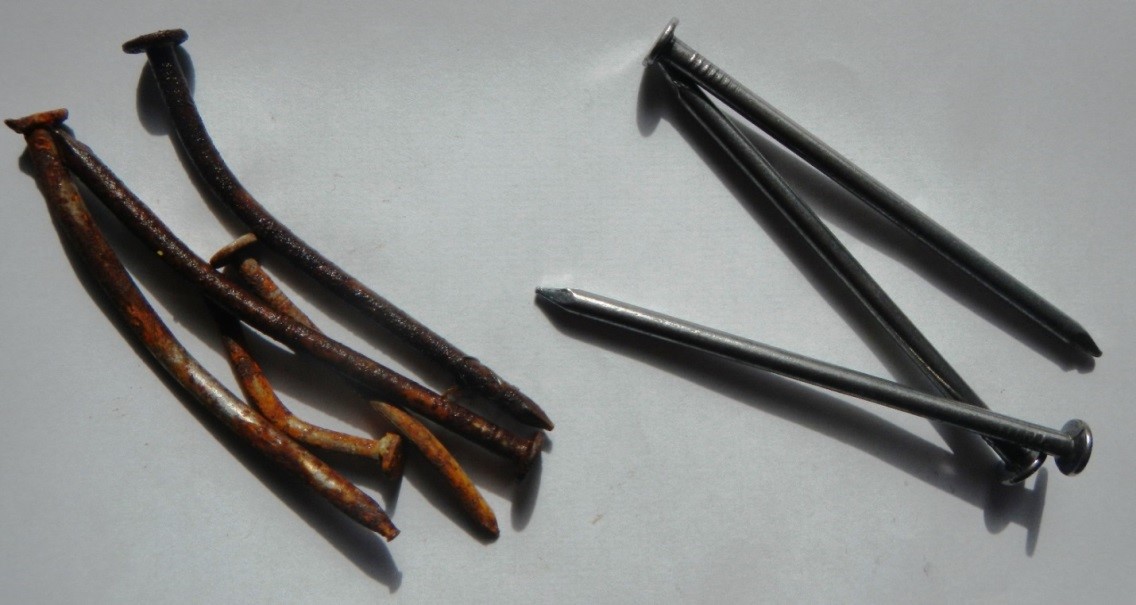
Some minerals dissolve completely during weathering, and the most common example is calcite (CaCO3), the main constituent of the rock limestone. Limestone caves and other karst features form when parts of limestone bodies are dissolved away.
Completing Exercise 5.3 will give you an opportunity to review the different types of chemical weathering.
Weathering rates differ in different climates. In general, weathering is enhanced at higher temperatures and with increased moisture levels, but as noted previously, freeze-thaw processes require frequent transitions from freezing to thawing, and from thawing to freezing, to be effective.
Exercise: Think about what type of weathering would be most prevalent in the following locations: coastal Brazil, the Gobi Desert in Mongolia, and the BC-Alberta Rockies.
Most of the common silicate minerals are significantly susceptible to chemical weathering, but one significant exception exists. At surface temperatures, the mineral quartz is essentially unreactive, and so while it breaks down mechanically—typically into sand sized grains—these grains can last for millions of years in the surface environment. This explains why the sand of most rivers, beaches, and deserts is dominated by the mineral quartz, and also why quartz is the dominant mineral of most sandstone. Table 5.1 in the textbook is an overview of the weathering products of different minerals. Many of the minerals, other than quartz, weather to clay minerals and to ions in solution, so it’s not surprising, as stated in Section 5.3, that quartz grains, clay minerals, and ions in solution are the most common products of weathering.
Completing Exercise 5.2 will give you some practice in interpreting weathering and transportation processes based on observations of the characteristics of sand grains.
Section 5.4 includes a discussion of the formation of soil, which would not exist without weathering. As shown on Figure 5.4.1, the main mineral components of soil are sand (mostly quartz), silt (a mixture of fine-grained quartz and other minerals), and clay minerals. All of these components are the products of mechanical and chemical weathering, and many of them are rich in chemical nutrients—such as phosphorous, potassium, magnesium, and calcium—that plants need to thrive.
The textbook includes a summary of the important controls over soil development. Please make sure that you understand why climate, parent material, slope, and time are important. Also, have a look at the discussion about soil horizons, which typically develop because of the downward percolation of water and the elements that it carries in solution. Under many circumstances, well-defined soil horizons will develop, including the O, A, E, B, and C horizons shown in Figure 5.4.3. See if you can identify some of those horizons in the profile in Figure 2-3.
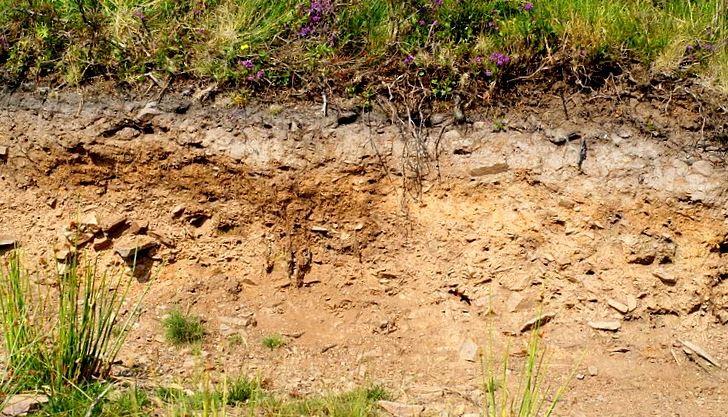
In dry areas, where evaporation is a dominant factor, water may move upward through the soil profile most of the time, and typically bring calcium ions with it. This process can lead to the development of a calcite-cemented soil known as caliche.
As noted at the start of Section 5.4: “ . . . we need to take care of our soil.” However, many of our agricultural and other practices have been very hard on what should be considered one of our most precious resources (see Figures 5.4.4 and 5.4.5 in the text). It’s a good idea for all of us to be aware of how to take care of soil, even if we don’t dig it ourselves.
Section 5.5 examines the regional distribution of soil types in Canada. It’s not critical for you to know that distribution, but it would be worthwhile for you to complete Exercise 5.4 to gain some understanding of the factors that are important to soil development.
Section 5.6 includes a discussion of the relationships between weathering and climate change. Quickly read through this section; we’ll cover these concepts in more detail in Unit 5.
Complete the questions at the end of Chapter 5. The answers are provided in your textbook.
